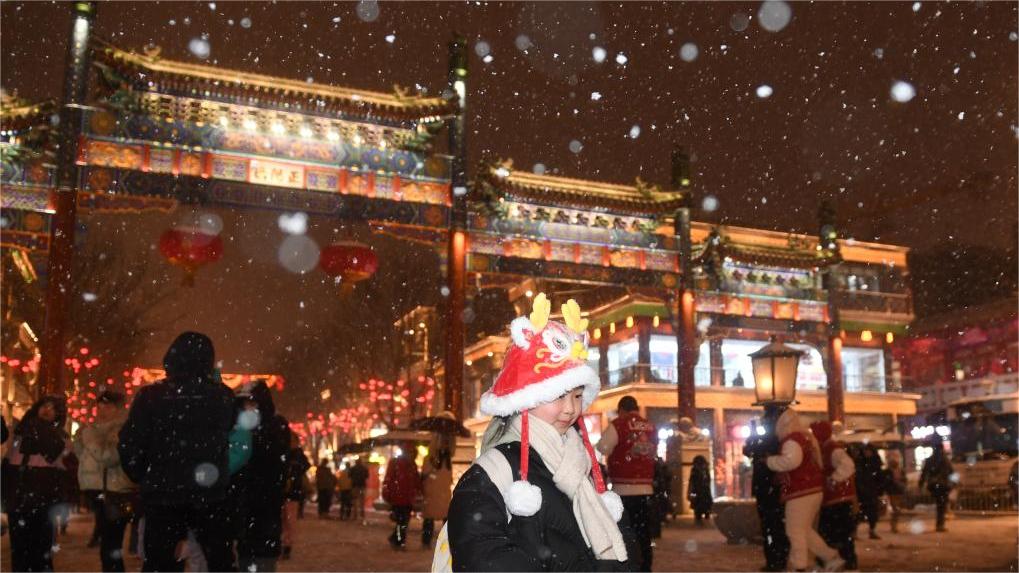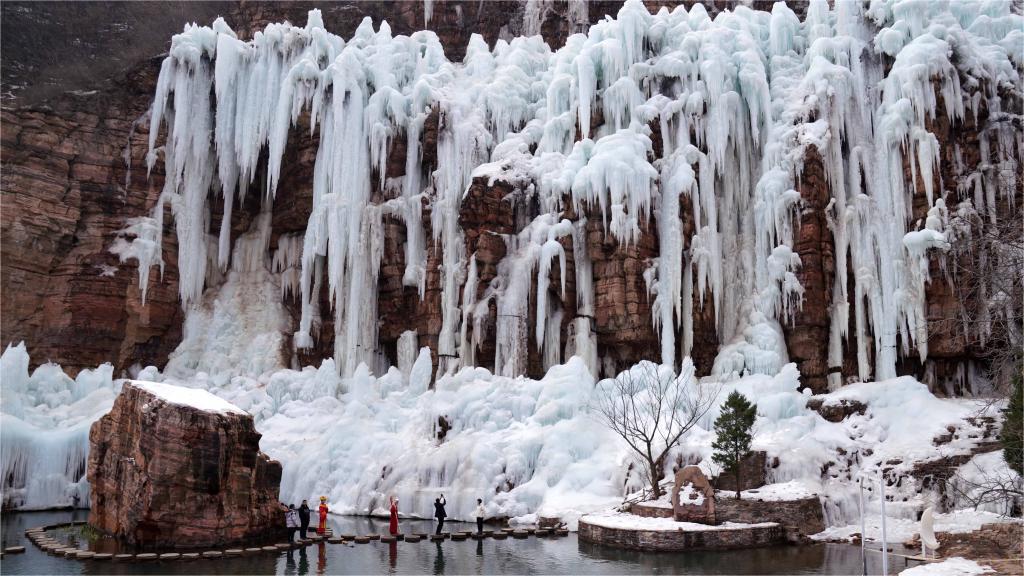Maintenance workers perform "surgery" on electrified railway of plateau
LHASA, Feb. 21 (Xinhua) -- On a frigid night, the lights of a roaring catenary rail vehicle from the Lhasa-Nyingchi Railway continued to flash, echoing the vibration of the rails of the first electrified railway in southwest China's Xizang Autonomous Region.
The railway catenary is a special power supply line installed along the track to supply electrical energy to trains. It is the main structure of the railway electrification engineering, known as the "air corridor" of electric trains by catenary maintenance workers.
On the flip side to the increase in power supply time, there are also loose connections and gaps that may appear at the joints of the catenary components such as droppers and isolation switches. "We carry out targeted maintenance to maintain the best performance of the catenary and prolong its service life," said Li Jiwang, Lhasanan Railway Station catenary maintenance team's foreman.
After the opening of the Lhasa-Nyingchi Railway in 2021, Li moved to the station and took over responsibility for the catenary maintenance. "The geographical environment on the plateau is special, so the catenary equipment power supply material and technology are more advanced," said Li.
Workers need to maintain the catenary on a lifting platform that is over five meters high. "I once made an operation on a platform that was over the rushing Lhasa River with a drop of dozens of meters. It was a thrilling experience," Li recalled.
Now, the number of workers in the station's maintenance team has grown from 12 to 30, including the youngest member Tashi Dundrup born in the 2000s. Despite more team members joining, the workload remains heavy.
Lhasa experienced a heavy snowfall a few days ago, and many sections of the catenary were covered with thick ice, requiring the workers to clear them. "Some iced catenary sections could be over 50 meters long, making de-icing a physically demanding task," said Tashi Dundrup.
On the operation platform, workers independently adjusted the height and angle of the platform and used different lengths of horn sounds to signal the maintenance vehicle driver to proceed forward, backward, or stop.
A long and then a short horn sound came from above, and 55-year-old Lyu Tianpeng, with over 20 years experience as a driver, moved the vehicle forward.
Two adjacent droppers are spaced less than eight meters apart, so the work platform can only advance a few meters at a time to allow workers to inspect each dropper, said Lyu. It took them over an hour to inspect 144 droppers and dozens of catenary joints in the 1.3-km-long Caigangshan tunnel.
Drari, a 27-year-old on-site safety officer, is responsible for recording the maintenance work with a yellow notebook in his hand, reinforced with tape. "From 2021 to now, I have used more than 10 notebooks," said Drari.
The catenary continuously provides power to electric trains, just like the "blood vessels" of the electrified railway. "We are like doctors for the electrified railway performing a delicate 'surgery' on its 'blood vessels' every night to ensure the safety of the railway," said Li. The meticulous nighttime work ensures that the Lhasa-Nyingchi Railway can operate safely and efficiently especially during the Spring Festival travel rush.
The 2024 Spring Festival travel rush in China began on Jan. 26 and lasts for 40 days. Official figures show that about 1.7 million tourist trips are expected in Xizang during the period this year.
Photos
Related Stories
- Unmanned submersible helps with operation of railway lines during Spring Festival travel rush
- China's Xizang receives over 2 million tourists during Spring Festival holiday
- Registered foreign trade companies in Xizang exceed 1,000
- China's railway sees 230 mln passenger trips in first half of Spring Festival rush
- Listening for leaks on railway system
Copyright © 2024 People's Daily Online. All Rights Reserved.









